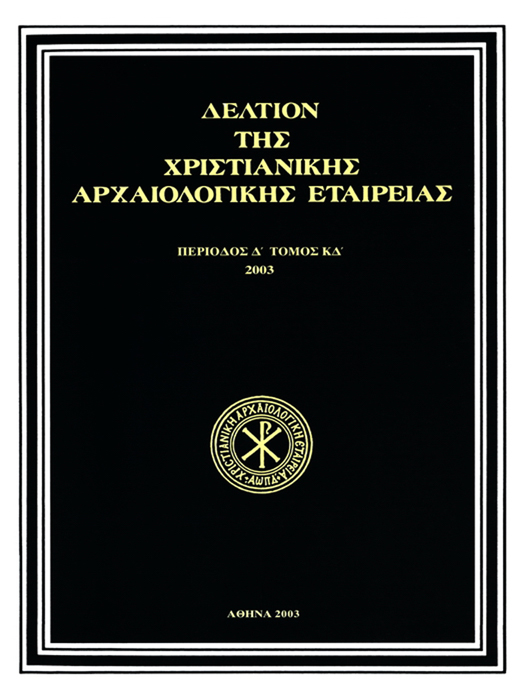Hierarchies of Rank and Materials: Diplomatic Gifts Sent by Romanus I in 935 and 938

Abstract
In two surviving lists of diplomatic gifts that were sent by the emperor Romanus I in 935 to the king of Italy and again in 938 to the caliph of Bagdad there is a quantity of precious artefacts which differ when compared. The analysis of the objects according to their extant paradigms in different collections contributes to our understanding of the luxuriousness of the gifts and hints to their symbolic value. Special emphasis is paid to the glass objects and the rock crystal ones since the gifts to the caliph included the latter, while those to the king of Italy the cheaper glass. It is thus concluded that in Byzantium there was a diplomatic hierarchy, which was followed by a corresponding quality of gifts.
Article Details
- How to Cite
-
MUNDELL MANGO, M. (2011). Hierarchies of Rank and Materials: Diplomatic Gifts Sent by Romanus I in 935 and 938. Deltion of the Christian Archaeological Society, 24, 365–374. https://doi.org/10.12681/dchae.395
- Section
- Articles
The copyright for articles in the journal Deltion of the Christian Archaeological Society (henceforth Deltion) is retained by the author(s), with first publication rights granted to the journal and to EIE/ EKT the right to store and communicate these articles to the public via its information infrastructures. By virtue of their appearance in this journal, articles are free to use with proper attribution for non-commercial uses under a ShareAlike obligation. The Christian Archaeological Society and EIE/EKT retain the worldwide right to reproduce, display, distribute, and use articles published in the Deltion in all formats and media, either separately or as part of collective works for the full term of copyright. This includes but is not limited to the right to publish articles in an issue of the Journal, copy and distribute individual reprints of the articles, authorize reproduction of articles in their entirety in another publication of the Christian Archaeological Society, and authorize reproduction and distribution of articles or abstracts thereof by means of computerized retrieval systems.


